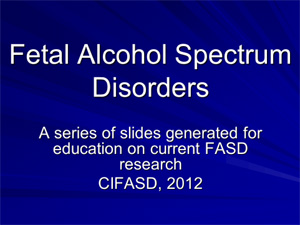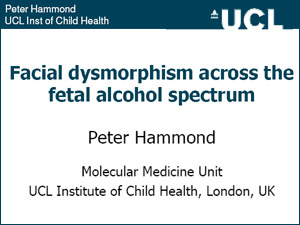Videos
These materials may be used for educational purposes only.
independently collected by project. Some participants have data in multiple projects. Please download this excel file for a more detailed list of projects, sample sizes, and available data for participants across project.
Data from physical exams are combined with data from parent questionnaires to estimate the likelihood of having an FASD using methods described in Mattson et al., 2023 (DOI: 10.1111/acer.14987).
Phase 1 – data include measures from the Leiter, NES3, DKEFS, CANTAB, CBC and other scales
Phase 2 – data include measures from the Leiter, DKEFS, CANTAB, BRIEF, ASEBA, Vineland, C-DISC, and other scales
Phase 3 – data include measures from the DAS-II, NEPSY-II, CANTAB, BRIEF, ASEBA, Vineland, C-DISC and other scales
Phase 1
[The => will link to detail when provided]
Phase 2
Phase 3
Phase 4
Data were collected from infants in Ukraine in a prospective study.
Phase 2
Phase 3
3D Facial Imaging data were collected in all phases of CIFASD
Phase 1
Phase 2
Phase 3
Phase 4
Phases 2 & 3: volumetric data
Phase 4: volumetric data, surface area, cortical thickness
Data describing birth (weight, length, maternal substance use) are available for a very limited subset of individuals, as most participants were adopted.
Available data from Phase 1 were collected across five sites:
(1) Center for Behavioral Teratology, San Diego State University, San Diego, CA;
(2) Seven Northern Plains communities, including six Indian reservations;
(3) Institute of Psychiatry, Moscow, Russia;
(4) Moscow Region Institute of Obstetrics and Gynecology, Moscow, Russia, and
(5) Omni-Net sites at the Rivne Diagnostic Center, and the Kherson Children’s Hospital, Rivne and Kherson, Ukraine.
Subject recruitment varied between the sites, and subject population was racially and ethnically diverse.
Data for Neurobehavior, Dysmorphology Demographics, 3D Facial Imaging were collected from sites 1-3 for children between the ages of 5 -18 years, although the majority were 7-18 years old.
Data on current and recent maternal alcohol consumption, demographics and pregnancy history in a prospective study of prenatal alcohol exposure were collected from mothers and their babies from sites 4-5. Dysmorphology data was collected for all participants.
Available data from Phase 2 were collected across six sites:
(1) Center for Behavioral Teratology, San Diego State University, San Diego, CA;
(2) Emory University, Atlanta, GA;
(3) the University of California, Los Angeles, Los Angeles, CA;
(4) University of New Mexico, Albuquerque, NM;
(5) Seven Northern Plains communities, including six Indian reservations; and
(6) Omni-Net locations in Ukraine: the Rivne Diagnostic Center and the Khmelnytsky Perinatal Center in Rivne and Khmelnytsky, Ukraine.
Subject recruitment varied between the sites, and subject population was racially and ethnically diverse.
Data for Neurobehavior, Dysmorphology, Demographics and Brain Volume were collected from sites 1-5 for children between the ages of 8-16 years. 3D Facial Imaging and Genetic data are also available for children from sites 1-3. Data from a longitudinal study were collected from site 6 for 350 moderately to heavily alcohol-exposed pregnant women and approximately 350 low or unexposed women.
Pregnancies were followed with serial ultrasounds and maternal blood samples were collected and analyzed for various nutrients and markers of oxidative stress and inflammation. Live born infants were given a dysmorphology exam, facial imaging, and neurobehavioral testing.
Available data from Phase 3 were collected across five sites:
(1) San Diego State University,
(2) Emory University,
(3) University of California, Los Angeles and Children’s Hospital Los Angeles, CA,
(4) University of Minnesota; and
(5) Omni-Net locations in Ukraine: the Rivne Diagnostic Center and the Khmelnytsky Perinatal Center in Rivne and Khmelnytsky, Ukraine.
Subject recruitment varied between the sites, and subject population was racially and ethnically diverse.
Data for Neurobehavior, Dysmorphology, Demographics, 3D Facial Imaging, Genetics, and Brain Volume were collected from sites 1-4 for children ages 5-7 and 10-16 years under two age-based protocols. Data from maternal blood samples were collected from pregnant women and fetal data were collected via ultrasound from mothers and babies at site 5. Live born infants were given a dysmorphology exam, facial imaging, and neurobehavioral testing. Collection of blood, urine, and cheek cell samples were also included.
Available data dictionaries:
Phase 1: Phase 1 Data Dictionary (2003-2007)
Phase 2: Phase 2 Data Dictionary (2007-2012)
Phase 3: Phase 3 Data Dictionary (2012-2017)
Dysmorphology data were collected from all phases and some individuals have been examined longitudinally. These data include information on height, weight, head circumference and other physical measures, as well as philtrum score, thin vermillion border score, and palpebral figure length.


